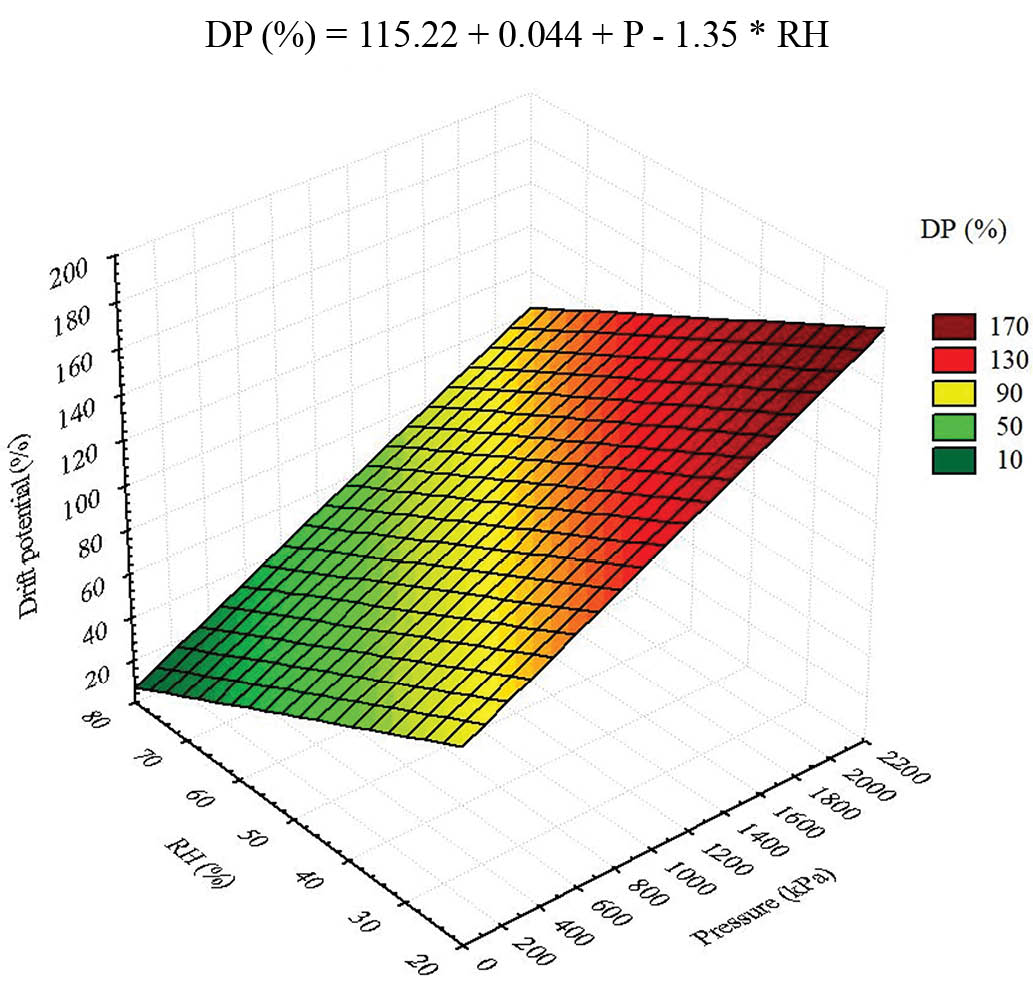HIGHLIGHTS:
In regions with a subtropical climate, bench testing can be used to verify the drift potential.
High temperatures, low relative humidities, higher working pressures, and higher wind speeds lead to greater potential for drift.
Variations in the height of the spray boom did not show any changes in the drift potential.
ABSTRACT
As an alternative to the International Organization for Standardization (ISO) method 22866, a method for the field measurement of spray drift was developed in the Department of Agricultural, Forestry and Environmental Economics and Engineering of the University of Turin, Italy. This new method, termed “test bench,” can be applied for wind conditions beyond those covered in ISO 22866. The aim of this study was to quantify the drift potential of three nozzles at two working pressures and two sprayer boom heights using the test bench method, under subtropical climate conditions. The experiment was conducted at Bandeirantes, Paraná State, Brazil, from 2018 to 2019 in a completely randomized design with 12 treatments, wherein three nozzles were used at the minimum and maximum working pressures, and two boom heights were tested, with four replicates for each combination. The following nozzles were used: XR11002 (100 and 400 kPa), AIXR11002 (100 and 600 kPa), and ATR 2.0 (400 and 2000 kPa), operating at boom heights of 0.50 and 1.00 m. The test bench method allows for drift assessment under subtropical climate conditions, and the results revealed that changes in meteorological conditions, nozzles, and pressure are key factors affecting the drift potential of boom sprayers. Relative air humidity and working pressure were the most important determining factors of the drift potential of the nozzles, whereas boom height had no effect on drift potential.
Key words:
spraying technologies; nozzles; agrometeorological conditions

 Thumbnail
Thumbnail
 Thumbnail
Thumbnail
 Thumbnail
Thumbnail
 Thumbnail
Thumbnail
 The wind direction was maintained in the range of 0- 40° on the test bench
The wind direction was maintained in the range of 0- 40° on the test bench

 RH - Relative air humidity; T - Air temperature; w - Wind speed; G - Group
RH - Relative air humidity; T - Air temperature; w - Wind speed; G - Group
 DP - Drift potential; P - Pressure; RH - Relative air humidity
DP - Drift potential; P - Pressure; RH - Relative air humidity